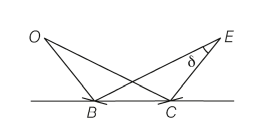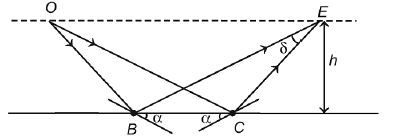Q.
The image of an object $O$ due to reflection from the surface of a lake is elongated due to the ripple s on the water surface caused by a light breeze. This is because the ripples act as tilted mirrors as shown below. Consider the case, where $O$ and the observer $E$ are at the same height above the surface of the lake. If the maximum angle that the ripples make with the horizontal is a , the $n$ the angular extent $\delta$ of the image will be

KVPYKVPY 2018
Solution:

